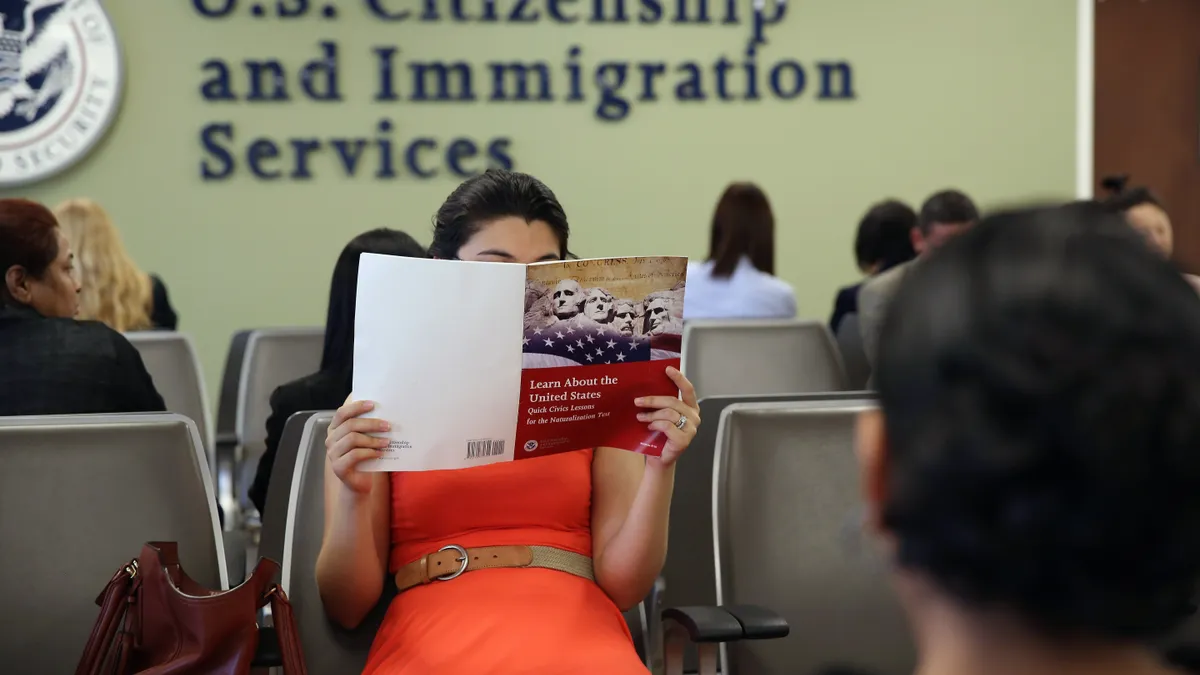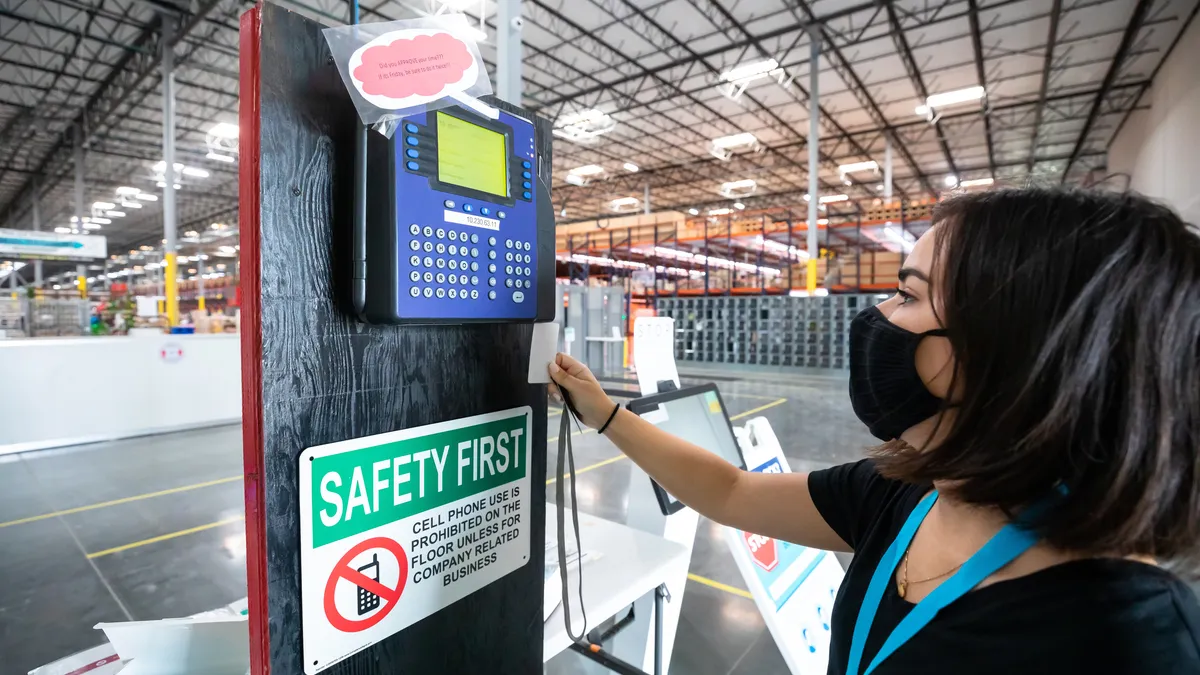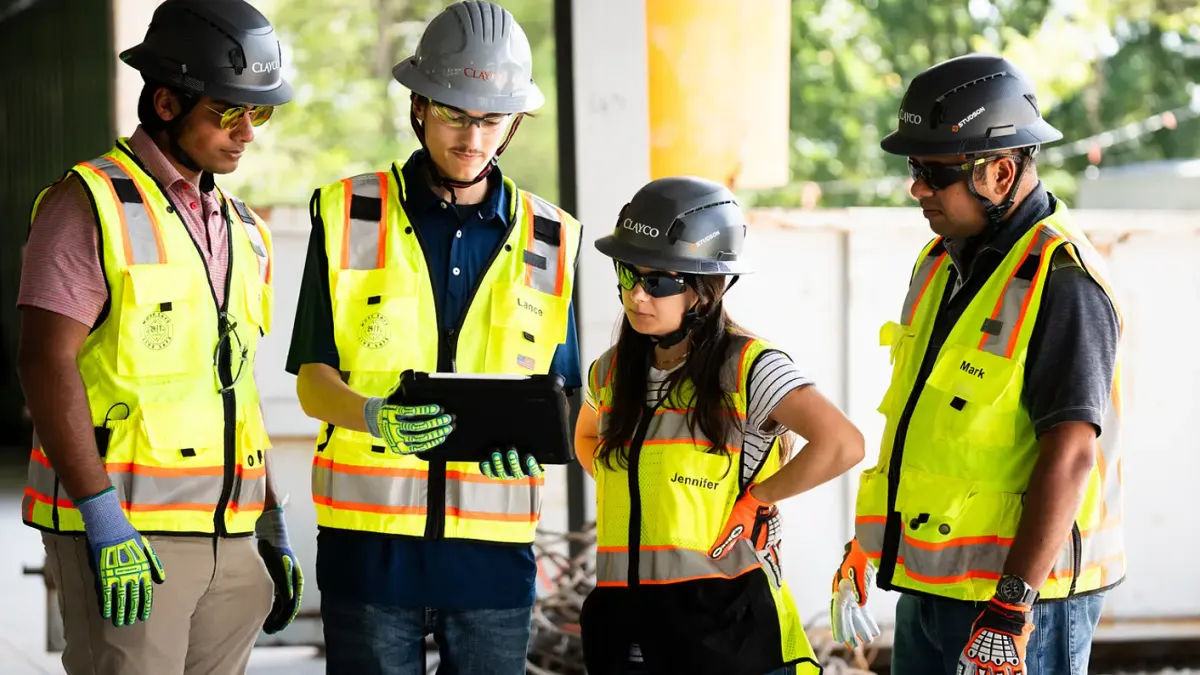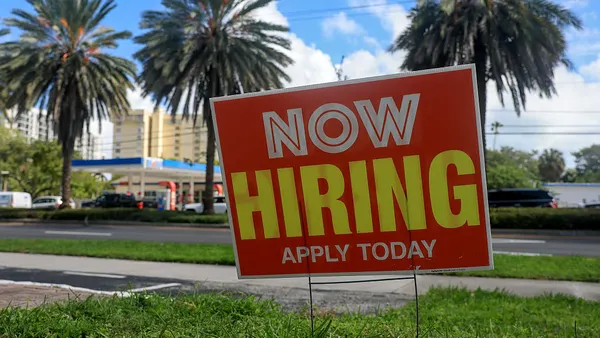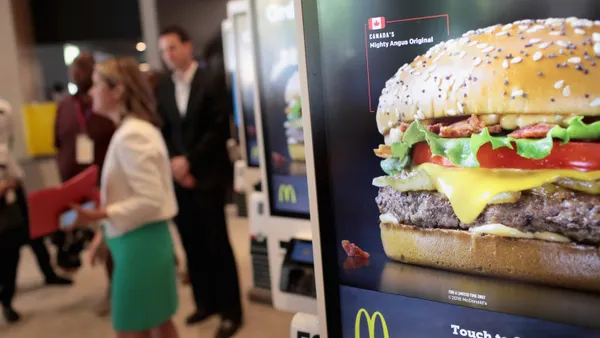An employment immigration visa program for skilled international workers that has historically been in demand is now seeing statistical declines.
That is the conclusion of a recent report by Bloomberg, which found last month that certain job categories covered by the H-1B visa program saw fewer preliminary applications from U.S. employers in 2021 compared to last year.
For example, the publication found that H-1B applications submitted for engineering mathematics jobs declined 12.6% year over year during the fiscal year ending in September. 2021 is the second consecutive year in which this measure declined, Bloomberg said.
The trend may be surprising to employers who have been keeping tabs on immigration in recent years, but sources who spoke to HR Dive believe it may have less to do with demand for the workers who would typically fill H-1B slots and more to do with the logistical challenges imposed by the COVID-19 pandemic.
Why is the decrease happening?
For many consecutive years, H-1B visa petitions from employers have exceeded the annual cap placed on the visas' allotment by the U.S. Department of Homeland Security. That employers are still utilizing the full allotment — even with some declines — should be a sign that demand remains high for the visas, said Scott Bettridge, chair of the immigration practice at Cozen O'Connor.
Dick Burke, CEO of immigration services provider Envoy Global, concurred that H-1B visas remain important to employers' hiring goals. "So many of those employers are depending on the tech space, and the shortage of STEM workers remains pervasive," he said in an interview.
Rather, Burke pointed to deficiencies in the federal government's immigration processing capabilities, which he said could be attributed in part to the pandemic and in part to "tumult in the last administration."
Others, including Littler Mendelson's Jorge Lopez, shareholder and chair of the firm's global mobility and immigration practice group, believe that a shortage of STEM graduates produced by the U.S. education system is part of the problem.
By and large, the pandemic has impacted international travel and relocation plans for employers in all industries, Bettridge said, noting that U.S. consulates abroad were closed in some cases for more than a year as COVID-19 spread. The U.S. Department of State also temporarily suspended routine services at embassies and consulates.
Meanwhile, processing times varied by country and embassy, Bettridge continued. Those in nations like Australia may be back online, but others, including Columbia, will not take visa appointments until next year or have suspended the process indefinitely.
Expanded remote work capabilities may have played a role in scaling back visa demand, though sources disagreed on the subject. Bettridge said companies with sufficient international presence and reach may be able to explore opening offices abroad in which highly skilled workers could operate.
"Some of my clients may have a little bit of remote work outside the U.S., but there's a complicating factor there in that a particular company may not have an operation in the country," Lopez said. He noted that it may not make sense to set up remote work abroad if an employer is concerned about being subject to other nations' employment laws.
Though Envoy has considered remote work in its analysis of H-1B trends, Burke said that the company generally does not view it to be a significant factor.
"What we have found in our practice and in our surveying is that the move to remote work is not extended all the way through to working from your home country," he added. Instead, U.S. employers surveyed by Envoy have emphasized the need for international employees, including H-1B visa holders, to be in the same time zone as — and in proximity to — their team members.
Methods for navigating slowdowns
The delays associated with submitting and receiving a response on an H-1B visa petition have created significant difficulty for employers that rely on the program, Bettridge said. As a result, some of those employers are pursuing different strategies to ensure their pipeline of international talent remains intact.
"Some of these companies have a more immediate need," Bettridge continued. He said he has seen clients open up locations in other countries, such as Mexico, in which they will park skilled international workers while awaiting a response on their H-1B petitions.
Lopez said he has also had clients that considered the same approach, particularly for STEM workers awaiting a reply on their visa applications.
The strategy is not only a reflection of the logistical challenges posed by COVID-19, but also one of an employment environment that is no longer as U.S.-centric as it used to be, Bettridge said. However, he added that he does not necessarily see employers moving away from H-1B visas in favor of such a strategy in the long term. "It depends on the nature of the business and its clients," he said.
For one thing, training is a barrier to pursuing this strategy. Bettridge described the situation for the financial services industry, in which international employees may need to undergo extensive training programs that can run as long as 18 months.
"A lot of that stuff can't be done abroad," he said. "It's more than just saying, 'we prefer to have you here.'"
Future of the H-1B program
Despite the fluctuation, sources largely said they expected demand for H-1B visas to continue for the foreseeable future.
"I think the pandemic has changed the playing field permanently in a lot of ways, but the H-1B program is alive and well and it's here to stay," Bettridge said. "I don't think it's going anywhere."
Burke said demand will remain particularly high for STEM-related H-1B petitions given the shortage of domestic talent in certain sectors. An August 2021 report from the nonprofit National Foundation for American Policy found that foreign nationals accounted for a majority of full-time graduate students in specialized fields, including 82% of students in petroleum engineering, 74% of students in electrical engineering and 72% of students in computer and information science.
"As we learn to live with COVID and if the current administration can return things to normal level, we very much expect this blip in H-1B to go away and return to increased applications," Burke said.
Things may be a bit more complicated in the near term, however, due to the emergence of the omicron variant. Burke said he believes it is too early to tell how the variant will impact the H-1B visa program specifically, but did note that the U.S. and other countries have responded in part by enacting some travel restrictions.
According to Lopez, any resultant surge in COVID-19 cases could pave the way for additional slowdowns, but this is not currently certain; "My experience has been that, when you had previous surges, you saw a little bit of tightening up on immigration policy," he said. "Read the papers. That's where you're going to see what the policy may be."
Aside from the pandemic, the change in presidential administrations may also benefit employers thanks to a decreased emphasis on requests for evidence for certain H-1B occupations, which increased under the Trump administration, per Burke.
"We're seeing a return to historic levels of RFE issuances, which is being very well received by employers," he said. "We're also seeing in the current administration a decline in denial rates."
The Biden administration also has reversed Trump-era restrictions on the program, including a temporary suspension of visa holders. Earlier this week, DHS announced a final rule withdrawing a separate Trump administration regulatory effort to modify the process by which the agency selects cap-subject H-1B petitions.
"The current administration is seeking to restore the regulatory landscape to what it was before: more predictable, more static, less new rules, less requests for evidence," Burke said. "Businesses like certainty, and the current administration is certainly moving to a more predictable landscape around immigration."



